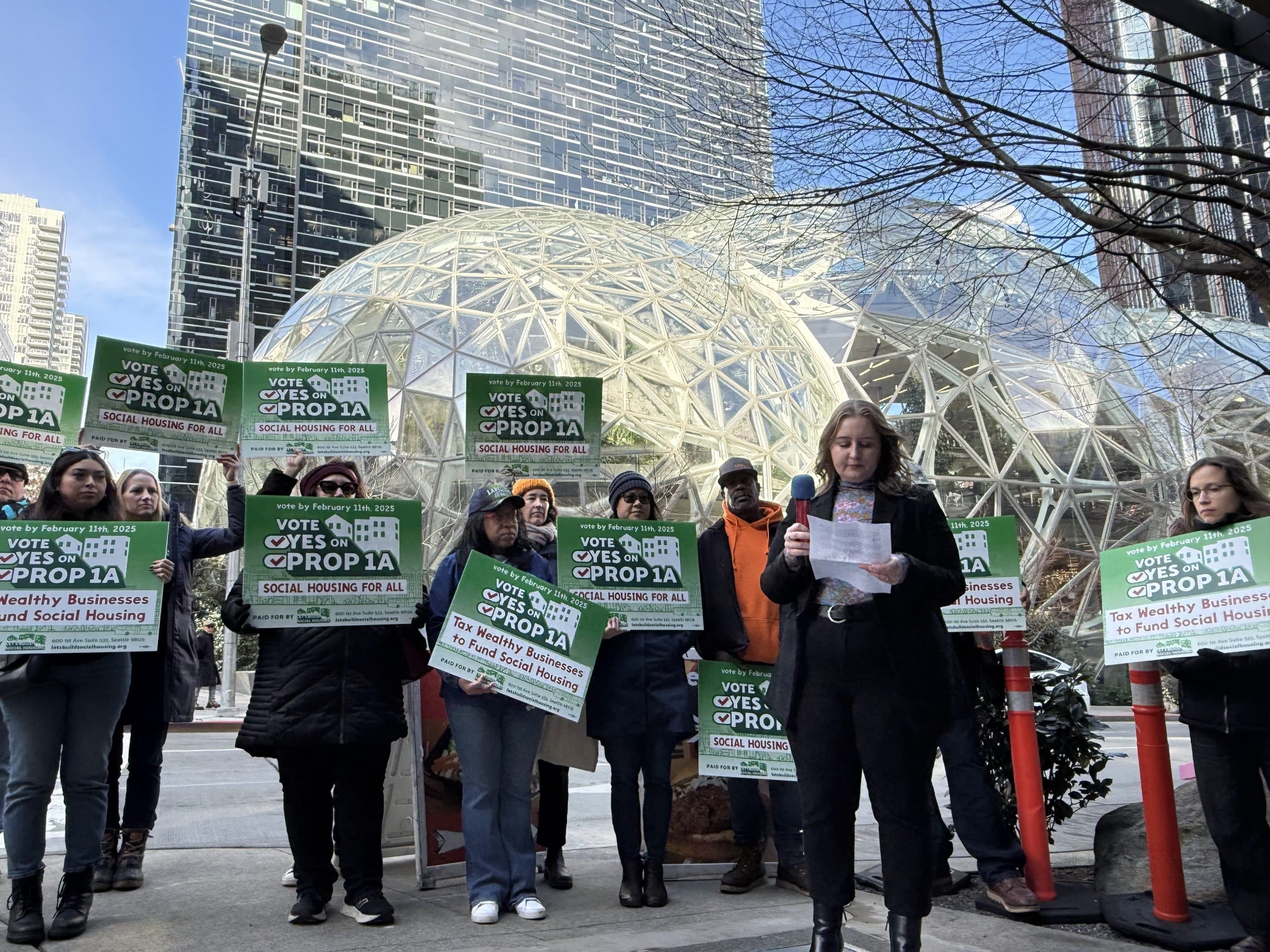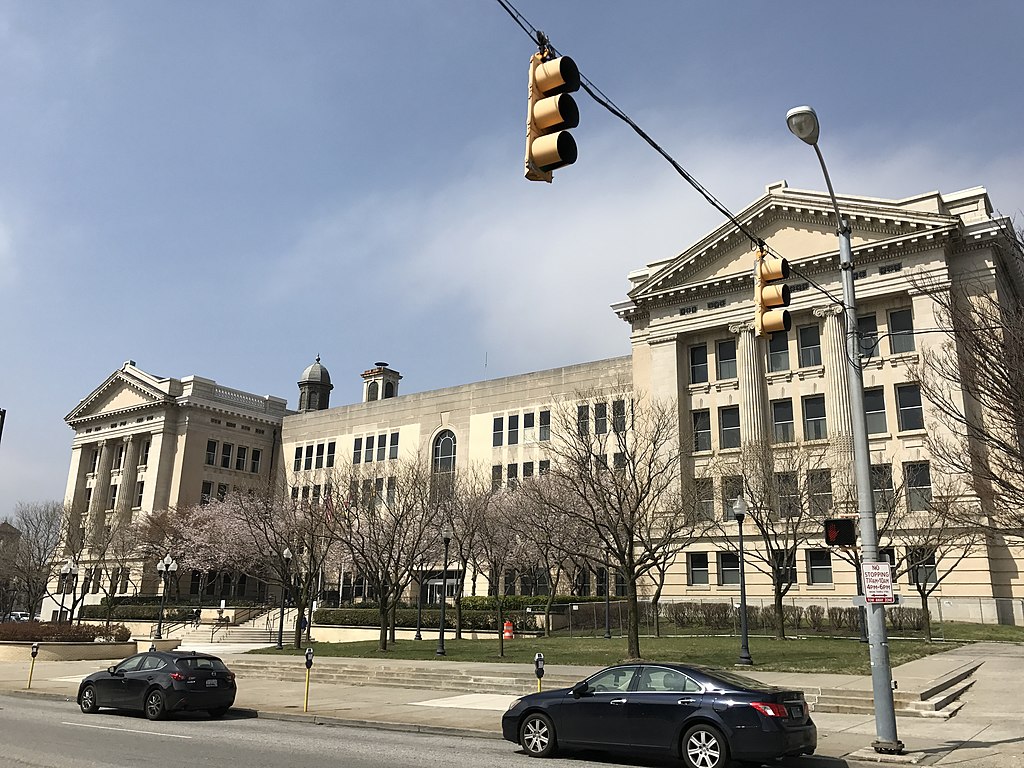
Photo by flickr user JK B, CC BY-SA 2.0
Rent control is one of the foremost demands of grassroots movements organizing around housing justice today. To activists across the country, from Los Angeles to Chicago, expanding rent control is a no-brainer policy that would slow displacement and help guarantee housing as a human right.
While many California Democrats now see affordable housing as a top priority, rent control and other tenant protections are conspicuously absent from their agenda. They talk about housing the same way Republicans talk about health care and taxes—free the market and watch prosperity trickle down.
Fortunately, a 2018 California ballot measure gives us a very real opportunity to advance the fight for rent control. In the midst of our current housing crisis, with 58,000 homeless people alongside 58 billionaires in Los Angeles alone, and global investors confident that the city “still has room for rents to rise,” expanding rent control has perhaps never been more urgent.
But implementing strong rent control measures in California cities first requires getting rid of a state-level law called Costa-Hawkins, passed in 1995, which places three major restrictions on rent control throughout the state:
- Single-family homes cannot be covered by rent control. (Wall Street investors love this part, especially Blackstone and other big private equity firms that have spent billions of dollars buying up and renting out homes in California since the housing crash.)
- Buildings built after 1995 cannot be covered by rent control, and cities that already had rent control at the time of Costa-Hawkins’ passage are prevented from expanding it. (So L.A., for example, cannot expand rent control to units built after 1978.)
- All rent control laws must include “vacancy decontrol,” meaning property owners can raise rents to whatever price they want once a tenant moves out of a rent-controlled unit.
There was a bill proposed in the State Assembly to repeal Costa-Hawkins, AB 1506, but it quickly died in committee in early January after two Democrats abstained from the vote.
But California voters will have a chance to do what the Democrat-dominated state legislature refuses to, as a Costa-Hawkins repeal measure will likely be on the November 2018 statewide ballot as the “Affordable Housing Act.”
Housing advocates’ support of this fight is crucial, because repealing Costa-Hawkins would be revolutionary (what some others would call a “non-reformist reform”). Here is what I mean:
Getting rid of Costa-Hawkins directly weakens the institution of the capitalist real estate market and challenges the dominant neoliberal notion that a profit-centered provision of shelter can realistically provide decent housing for all.
By rejecting the idea that property owners are entitled to as much wealth as they can possibly squeeze out of their tenants, Costa-Hawkins repeal represents a huge step toward ensuring housing as a human right, rather than a commodity. Simply put, it’s a reform that places us on exactly the right path.
This is especially significant considering the pathetic solutions being proposed by state-level Democrats, who seem happy to simply tinker at the margins of a system that leaves over 118,000 Californians homeless and 1.5 million households spending over 50 percent of their incomes on rent. An anti-capitalist logic of housing provision is wholly absent from debates occurring at the highest levels of California politics, as our elected officials (California Democrats) recently even failed to pass a statewide “just-cause” eviction bill—the absolute minimum as far as renter protections go.
Gov. Jerry Brown signed 15 housing-related bills in September of 2017, and 13 of them were aimed at spurring private construction or preservation of units. The thinking behind these reforms is clear: free the capitalist market from burdensome regulations, and housing will trickle-down to all.
The other two measures were a $4 billion bond for construction of low-income housing (pending two-thirds approval by voters) and a $75 real estate transaction fee (though not even applicable to home or commercial building sales!), which some analysts say together will not even provide enough new construction to keep up with population growth.
It’s abundantly clear that most California politicians have no intention of challenging the immensely profitable status quo, which would mean proposing solutions that match the scale of the crisis. The only slightly imaginative solution offered this year has been SB 827, from YIMBYist Scott Wiener, which really was just another deregulatory, trickle-down approach, at best, and an absolute gentrification bomb, at worst. There’s been no talk of taxing the rich to finance the construction of public housing on a massive scale, and hardly any talk of expanding rent control.
But in 2018, we can change that. Repealing Costa-Hawkins will not end the capitalist real estate market, or even implement any new rent control measures on its own. But it would be the most significant step in decades toward de-commodifying housing and treating safe shelter as a human right.




Jacob,
Your advocacy for repealing Costa Hawkins will hurt tenants and small landlords alike. Consider a senior retiree who owns single family home. She moves to a long term care facility due to illness. She rents her home out. She recovers in two years and returns home.
Without the protection of Costa Hawkins, she will not be able to move back. Her home is not hers anymore – the tenant can live there forever, no matter how rich the tenant is. Essentially, the city takes her home away and gives it to that tenant.
You try to incite emotions by mentioning Blackstone. You never considered the small property owners like the above. I guess these small property owners are too small for your attention.
Repealing Costa Hawkins will not solve California’s housing problem. It is only going to exacerbate it because it limits supply (the retiree above will not rent out her home) and increases demand (the rich tenant has all the incentives to stay in that home forever).
When you advocate a policy, you need to think through – what side effects will the policy have. Economic policies may have unintended consequences. Repealing Costa Hawkins will only hurt the people you claim to help.
The elderly have always been exploited in California housing politics by those who seek greater protections for the wealthy. Your tactic is a big reason why California ended up with Prop 13, which drastically disinvested the state from local communities just as California’s demographics began to shift to Latinos (coincidence?).
But there’s also a simpler reason to dismiss this argument: the senior retiree just always waits until the lease is up and then moves back in. All Costa Hawkins repeal would do is allow her local city to impose rent control on her home, blocking her from drastically increasing the rent at the end of the lease term; but if she wants to move back in, there’s no law stopping her.
Stephano,
There is a law stopping her. With rent control you can’t not renew the lease without cause. If you want to move back into your home you would have to pay a large fee worth about 5 months rent. People will sell or airbnb their homes. Rent control hurts the people it is meant to help. It has been proven to cause housing shortages.
Jacob,
While repealing Costa-Hawkins may seem revolutionary to someone who was born after it became law, the repeal will only take us back to the way things were 23 years ago. Rather than being revolutionary, repeal would be devolutionary. It will once again allow cities and counties to adopt local rent controls without the state-imposed limits of Costa-Hawkins.
We all know that Costa-Hawkins doesn’t preclude local governments from enacting rent controls. It only limits what they can control. Only 15 of California’s 540 cities and counties currently have rent controls. That’s little changed since Costa-Hawkins was passed. Since three of the state’s most populous cities have rent control, perhaps 15% of Californians are covered by rent control.
Repealing Costa-Hawkins will not enact any rent controls. It only allows locals to consider stricter rent controls. It is the first step for rent control advocates and far from victory. There are two questions that should be considered when fighting to repeal Costa-Hawkins: 1) will additional cities and/or counties adopt rent control if not constrained by Costa-Hawkins and 2) will those that currently have rent control expand their programs after the repeal.
If the law is repealed, people will need to fight for local rent control measures on a jurisdiction-by-jurisdiction basis. Passing these measures will include massive fights over both the characteristics of the local ordinance and whether to adopt rent control at all. Since renters are the minorities of most jurisdictions that do not currently have rent control, compromises are likely. Most jurisdictions will probably exempt new construction after some agree upon date. Many will also adopt vacancy decontrol. Will advocates accept these limitations?
Repealing Costa-Hawkins will be no panacea for California tenants for other reasons. Rents are so high in California because the demand for rental units far exceeds the supply. There simply aren’t enough rental units for the millions of people who want to live in California. Rent control will not solve this shortage, and could make it worse. Tenants will have to keep fighting for too few units.
Those with the lowest incomes and worst credit will continue to be homeless or spend over 50% of their incomes on rent. This won’t change with the repeal of Costa-Hawkins. While rent controls may roll back rents for a year, possibly longer, they will not reduce rents to levels that the lowest income households can afford.
You note that over 118,000 Californians are homeless. Well, back in 2005, when rents were much lower, 188,299 Californians were homeless. So even if rents get rolled back 10 to 15 years, millions of Californians would still be unable to afford their rent. Repealing Costa-Hawkins and enacting local rent controls will do nothing for these people.
What is needed to address California’s housing crisis is increased housing production. We need thousands and thousands of new rental units that are modest and affordable. New luxury apartments will do nothing to solve the lack of affordable apartments.
Instead of fighting to control the rents for those lucky tenants who have relatively affordable rents, you should be fighting to increase the supply of affordable housing for those who don’t.
Happy to see YIMBYs read Shelterforce!
Yes, they do!
Though I have to point out that “New luxury apartments will do nothing to solve the lack of affordable apartments” is not the usual YIMBY line.
I think that Jerry (who is one of my all time housing heros!) is voicing an opinion that was mainstream and widespread among affordable housing professionals long before the term YIMBY was coined. Clearly, building more housing (both market and rent restricted) is the only real long term ‘solution.’ (That seems to be the mainstream YIMBY position as well:more housing at all income levels.)
But it is just that:long term. People are feeling the impact and threat of this market NOW and it is just not sufficient to only offer long term strategies. People need something more immediate to fight for, even if it does not ‘solve’ the real problem. I prefer vouchers as the more immediate strategy (because they are income targeted and can offer more reliable security to tenants) but I hear organizers saying that rent control is a winnable policy that can make a real difference more immediately.
As Jacob points out, the political establishment has finally woken up (not just in CA) to the need to build more housing. I think that is a good thing. But, I think we all agree that building alone won’t do the job. It matters who we are building for. We are going to have to fight for more below market rate/social housing and fight to ensure that new housing is built in all neighborhoods. To win those fights, we will need more tenant power. Rent control may not solve the problem (and there is at least some risk of it making the problem worse in some places) but it has historically been a strong tool for engaging and organizing tenants who aren’t likely to take to the streets to fight for strategies that will take decades to implement. Lets face it, ‘affordable housing professionals’ (like us) aren’t likely to win the resources to implement more equitable production strategies without help from a strong tenants movement.
You have no idea how real estate works. Another uneducated blogger. First, you have opportunity costs. That is if I can’t make money in real estate at the same rate return of and on or greater than investment markets, then why invest in it. That then triggers REITS ( I hope you know what that even means) to take their money to other states where there is no rent control. I’m more than sure you did your homework on this and saw the impact on this with the first round of rent control in California and I’ve have to believe that you sat down with these companies and ran ARGUS calculations. Since you’ve done all the aforementioned exercises, then I’m sure you took into account property taxes. First, LAUSD is proposing $660 more in property taxes per property. Why, they need more money for the dramatic increase in student population (that’s another study I’m sure you’ve already spent days and days analyzing). Under rent control Prop.13 revenues would drop since multifamily GPI would be dramatically affected thus raising CAP rates. To compound the PTAX loses and stunt in growth, you add population growth. I’m sure that’s in your calculations too. If you have 5 people shopping for 1 banana, the price of the banana goes up (supply and demand). If you have 25 bananas and only 5 buyers, then price of bananas drop. We need more units, not less. So to wrap up your real estate 101 lesson, you’ll end up with a MASSIVE housing shortage and100 TIMES more homeless because you wanted rent control. When you have 30 years of real estate experience, then you can lecture people on what we should do on limiting rents. I know more about rent control, Investments, property taxes, ROI”s, ADU’s, etc. then you ever will. Till then, you should stop speading FAKE news.
There is too much self serving disingenuous nonsense in all of this discussion. More people want to live in California than the current supply of housing allows at an affordable price. This fact needs to be addressed. Either the desire to live in California must be reduced or the price of housing must be set at an affordable level for those who want to live here. Perhaps both.
This will require large changes in the status quo. People will get hurt but people are already being hurt by the status quo. There is no painless solution. As a general measure the rich can afford the blow more than the poor so if there is to be a blow so the blow should fall there. Society is not a suicide pact and nothing trumps necessity.
Introduce rent controls and set the price at a reasonable level. Force all adjustment to supply at that level. Those who cannot produce housing at a reasonable price need to be driven from the market. This includes politicians and others who add to costs with unnecessary regulations and restrictions.
The best thing about rent control is that it will start a fight over all these issues and probably much more. This is a fight that needs to be fought. The left is hostile to capitalism, but this is not entirely smart. Control over capital is the center of economic prosperity. Rather than deny the legitimacy of capitalism one must fight to gain control over capital. The working class has for far to long abjured the struggle for the possession and control of capital. We are really all capitalists or we are all dead. The poor by definition are usually one step away from death. Time toface the fact that control of capital is the sine qua non of existence.
While I understand advocating for affordable housing, I cannot advocate for this proposal. My mom has been a landlord for 30 years, and currently she has two tenants who are paying about 3 times less than the market rents in Silver Lake. This was fine until she hit retirement age and until her partner died. The death of her partner created a property tax reassessment and her retire reduced her income dramatically. Now my mom has this property that she has to subsidize renters that easily make $100,000 a year, while she can barely survive.
Instead of investing in Wall St, the rental was supposed to help her retire with dignity. Now her option is to sell to the investor class who are the very people who are creating the skyrocketing rents.
I wish you guys would stand down and create a whole policy because this half way maneuver is gonna be ruinous. It is not based upon reality or numbers. It is so blind it makes me not feel akin to the progressive movement.
Thanks
Your mom has been a landlord for 30 years and only has two tenants? That’s a very tiny apartment building.
I hate to break this to you but if your mom owns a building she does not live in, than she *is* part of the so-called investor class. She may not be managing a multi-billion dollar hedge fund, but she owns and makes money off of property other than her home. That’s investment property. Whether or not it was a wise investment is obviously debatable.
If her tenants are paying “3 times less” than the market rents then they must have lived there for quite sometime. So you’re saying it would be more fair to have tripled the rents of two tenants who are supporting your mother and themselves? If so, thats 2 working people getting screwed vs 1 person who lives off the backs of working people not making as much money as they used to. In your story there are 2 out of 3 parties who benefit from rent control. Hate to break it to you, but that means its working.